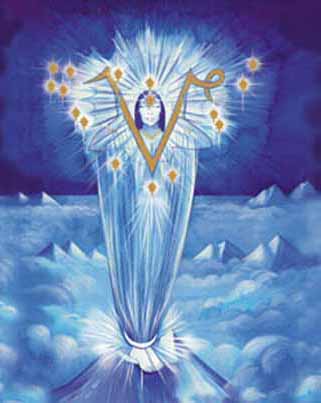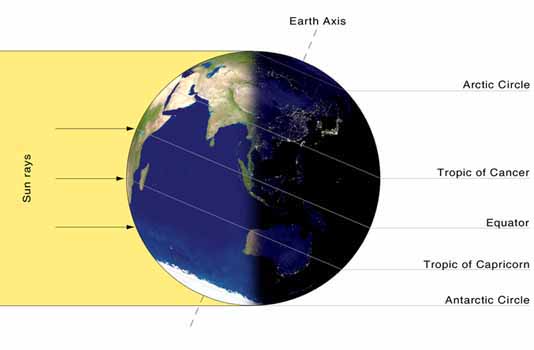

Winter solstice is an astronomical phenomenon marking the shortest day and the longest night of the year. In the Northern Hemisphere this is the December solstice and in the Southern Hemisphere this is the June solstice.
The axial tilt of Earth and gyroscopic effects of its daily rotation mean that the two opposite points in the sky to which the Earth's axis of rotation points change very slowly (making a complete circle approximately every 26,000 years). As the Earth follows its orbit around the Sun, the polar hemisphere that faced away from the Sun, experiencing winter, will, in half a year, face towards the Sun and experience summer. This is because the two hemispheres face opposite directions along Earth's axis, and so as one polar hemisphere experiences winter, the other experiences summer.
More evident from high latitudes, a hemisphere's winter solstice occurs on the shortest day and longest night of the year, when the sun's daily maximum elevation in the sky is at its lowest. The winter solstice itself lasts only a moment in time, so other terms are used for the day on which it occurs, such as "midwinter", or the "shortest day". It is often considered the "extreme of winter" (Dongzhi in the Chinese calendar).
In meteorology, winter in the Northern Hemisphere spans the entire period of December through February. The seasonal significance of the winter solstice is in the reversal of the gradual lengthening of nights and shortening of days. The earliest sunset and latest sunrise dates differ from winter solstice, however, and these depend on latitude, due to the variation in the solar day throughout the year caused by the Earth's elliptical orbit (see earliest and latest sunrise and sunset).
Worldwide, interpretation of the event has varied across cultures, but many have held a recognition of rebirth, involving holidays, festivals, gatherings, rituals or other celebrations around that time.
In astronomy, the winter solstice is the moment when the earth is at a point in its orbit where one hemisphere is most inclined away from the sun. This causes the sun to appear at its farthest below the celestial equator when viewed from earth. Solstice is a Latin borrowing and means "sun stand", referring to the appearance that the sun's noontime elevation change stops its progress, either northerly or southerly. The day of the winter solstice is the shortest day and the longest night of the year.
In the northern hemisphere, the winter solstice usually falls on December 21/December 22, which is the southern hemisphere's summer solstice. At this time, the sun appears over the Tropic of Capricorn, roughly 23.5 degrees South of the earth's equator. In the southern hemisphere, winter solstice falls on June 21/June 22, which is the northern hemisphere's summer solstice. At this time, the sun appears over the Tropic of Cancer.
Since the winter solstice, summer solstice, vernal equinox, and autumnal equinox were probably observed for the first time by people in the northern hemisphere, these naming conventions originally corresponded to the northern hemisphere's seasons. In most reckonings, the winter solstice is midwinter. In Ireland's calendar, the solstices and equinoxes all occur at about midpoint in each season. For example, winter begins on November 1, and ends on January 31.
No one is really sure how long ago humans recognized the winter solstice and began heralding it as a turning point -- the day that marks the return of the sun to the northern hemisphere.
Many cultures the world over perform solstice ceremonies. At their root -- an ancient fear that the failing light would never return unless humans intervened with anxious vigil or antic celebration. Most ancient cultures built Astronomical Observatories - tombs, temples, cairns among others, to align with the solstices and equinoxes.
The winter solstice was immensely important because the people were economically dependent on monitoring the progress of the seasons. Starvation was common during the first months of the winter, January to April (northern hemisphere) or July to October (southern hemisphere), also known as "the famine months". In temperate climates, the midwinter festival was the last feast celebration, before deep winter began.
Most cattle were slaughtered so they would not have to be fed during the winter, so it was almost the only time of year when a plentiful supply of fresh meat was available. The majority of wine and beer made during the year was finally fermented and ready for drinking at this time. The concentration of the observances were not always on the day commencing at midnight or at dawn, but at the beginning of the pagan day, which in many cultures fell on the previous eve.
Because the event was seen as the reversal of the Sun's ebbing presence in the sky, concepts of the birth or rebirth of sun gods have been common and, in cultures which used cyclic calendars based on the winter solstice, the "year as reborn" was celebrated with reference to life-death-rebirth deities or "new beginnings" such as Hogmanay's redding, a New Year cleaning tradition. Also "reversal" is yet another frequent theme, as in Saturnalia's slave and master reversals.
There's much new scholarship about Neolithic peoples and their amazing culture. For example, it now looks as though writing is much more ancient than we earlier thought -- as much as 10,000 years old. Neolithic peoples were the first farmers. Their lives were intimately tied to the seasons and the cycle of harvest - which would mean that they were attuned to the movement of celestial objects and seasons. Scholars have not as yet found proof, though, that these peoples had the skill to pinpoint a celestial event like a solstice. Earliest markers of time, found from these ancient peoples are notches carved into bone that appear to count the cycles of the moon. But perhaps they watched the movement of the sun as well as the moon, and perhaps they celebrated it -- with fertility rites, with fire festivals, with offerings and prayers to their gods and goddesses.
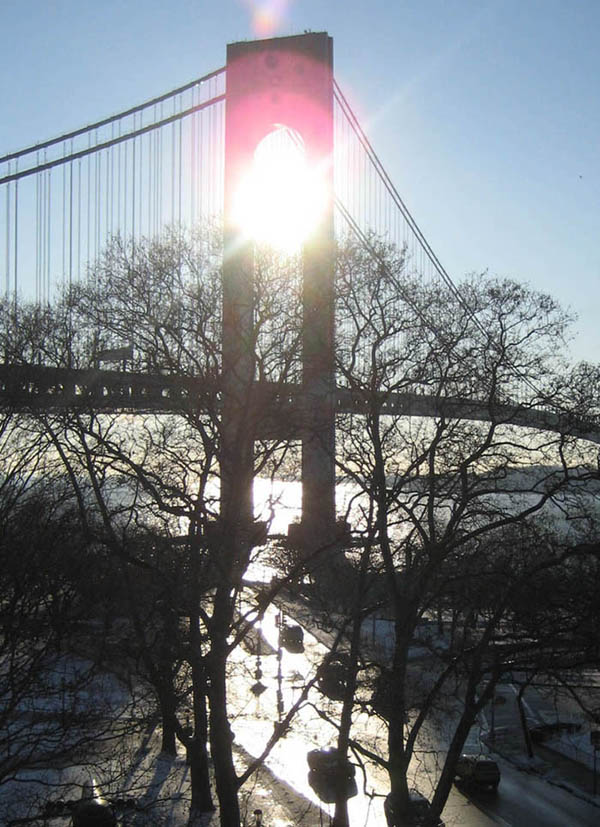
The arches of the Verrazano Bridge align with the sun at the moment of the Winter Solstice
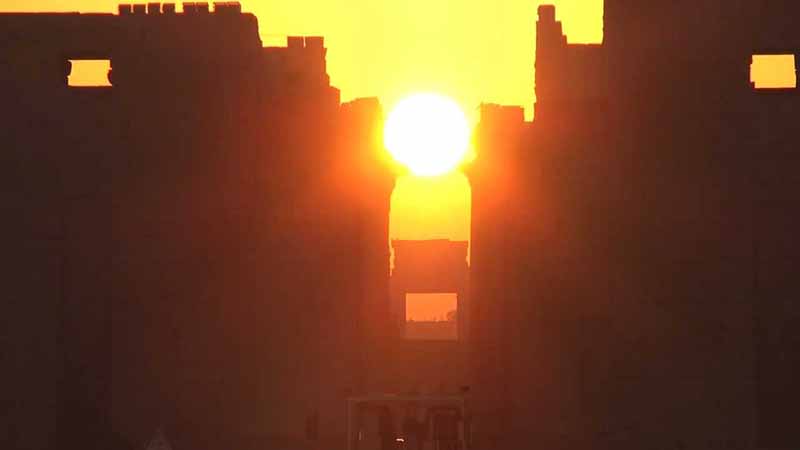
Five thousand years ago , ancient Egyptians celebrated the rebirth of the sun at this time of year. They set the length of the festival at 12 days, to reflect the 12 divisions in their sun calendar. They decorated with greenery, using palms with 12 shoots as a symbol of the completed year, since a palm was thought to put forth a shoot each month.
The 12 Days of Christmas -- The midwinter festival of the ancient Egyptians celebrated the birth of Horus - son of Isis (the divine mother-goddess). The celebration was 12 days long, reflecting their 12-month calendar. This concept took firm root in many other cultures. In 567 AD, Christians adopted it. Church leaders proclaimed the 12 days from December 25 to Epiphany as a sacred, festive season.
The Mesopotamians celebrated winter with a 12-day festival of renewal,
designed to help the god Marduk tame the monsters of chaos for one more year.
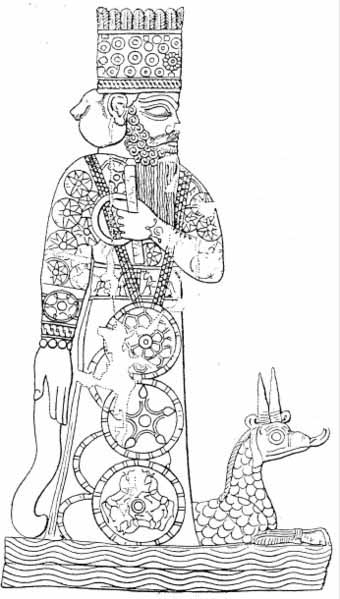
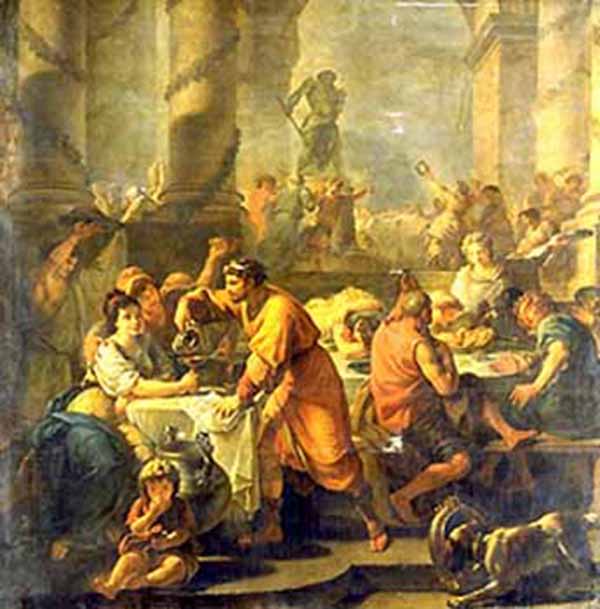
The Egyptian and Persian traditions merged in ancient Rome, in a festival to the ancient god of seed-time, Saturn. The people gave themselves up to wild joy. They feasted, gave gifts, and decorated their homes with greenery. The usual order of the year was to let go of grudges and quarrels. Wars were interrupted or postponed. Businesses, courts, schools closed. Rich and poor were equal, slaves were served by masters, children headed the family. Cross-dressing and masquerades, merriment of all kinds prevailed. A mock king - the Lord of Misrule - was crowned. Candles and lamps chased away the spirits of darkness.
As Roman culture became more licentious, so did Saturnalia. an ancient Roman festival in honor of the deity Saturn, held on 17 December of the Julian calendar and later expanded with festivities through to 23 December. The holiday was celebrated with a sacrifice at the Temple of Saturn, in the Roman Forum, and a public banquet, followed by private gift-giving, continual partying, and a carnival atmosphere that overturned Roman social norms: gambling was permitted, and masters provided table service for their slaves. The poet Catullus called it "the best of days."
In Roman mythology, Saturn was an agricultural deity who was said to have reigned over the world in the Golden Age, when humans enjoyed the spontaneous bounty of the earth without labor in a state of innocence. The revelries of Saturnalia were supposed to reflect the conditions of the lost mythical age, not all of them desirable. The Greek equivalent was the Kronia.
Although probably the best-known Roman holiday, Saturnalia as a whole is not described from beginning to end in any single ancient source. Modern understanding of the festival is pieced together from several accounts dealing with various aspects. The Saturnalia was the dramatic setting of the multivolume work of that name by Macrobius, a Latin writer from late antiquity who is the major source for information about the holiday. In one of the interpretations in Macrobius's work, Saturnalia is a festival of light leading to the winter solstice, with the abundant presence of candles symbolizing the quest for knowledge and truth. The renewal of light and the coming of the new year was celebrated in the later Roman Empire at the Dies Natalis of Sol Invictus, the "Birthday of the Unconquerable Sun," on December 25. The popularity of Saturnalia continued into the third and fourth centuries AD, and as the Roman Empire came under Christian rule, some of its customs have influenced the seasonal celebrations surrounding Christmas and the New Year. Read more
The Busy Romans Needed a Mid-Winter Break Too ... and it Lasted for 24 days Ancient Origins - December 23, 2016
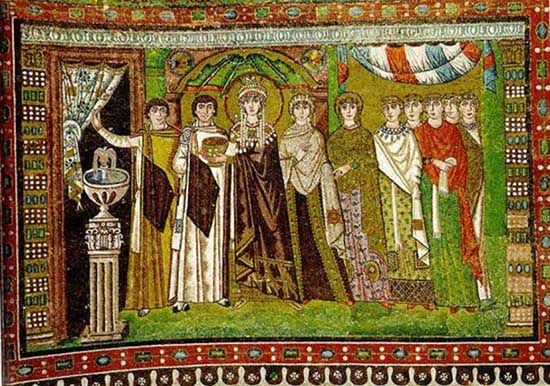
The actual reasons for celebrating Christmas at this particular time in the year have long been debated. Links have often been drawn to the winter solstice and the Roman festival of Saturnalia. Some people have also associated it with the supposed birthday of the god Sol Invictus , the ̉unconquered sunÓ, since a fourth-century calendar describes both this and Christ's birth as taking place on December 25. Such speculation has inevitably led to claims that this traditionally Christian festival is little more than a rebranding of earlier pagan activities. But questions about the religious identity of public celebrations are, in fact, nothing new and were being asked in the later periods of the Roman empire as well. This is particularly evident in the case of a rather obscure Roman festival called the Brumalia, which started on November 24 and lasted for 24 days. We cannot be sure exactly when it began to be celebrated, but one of our best accounts of it comes from the sixth century AD. A retired public official called John the Lydian explained that it had its origins in earlier pagan rites from this time of year, including Saturnalia. Some people celebrated Brumalia by sacrificing goats and pigs, while devotees of the god Dionysus inflated goat skins and then jumped on them. We also believe that each day of the festival was assigned a different letter of the Greek alphabet, starting with alpha on November 24 and finishing with omega on December 17.
Harking Back: The Ancient Pagan Festivities in our Christmas Rituals Ancient Origins - December 23, 2016
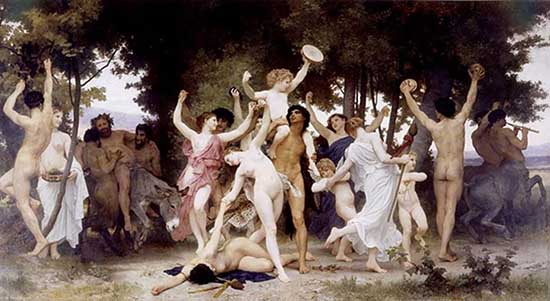
When we think of the Romans, gift-giving, carol-singing and celebrating the birth of Christ don't immediately present themselves. Waging wars, general oppression and a never-ending desire to rule the world are more likely to spring to mind. But various Christmas traditions come from ancient pagan festivities, including the Roman celebration of the Saturnalia. Historian and cultural investigator, Polydore Vergil (c. 1470-1555), was the first to record the similarities between certain pagan and Christian practices. He noted the connection between the predominantly English tradition, 'The Lord of Misrule', which occurred on Christmas Day and an equivalent custom of the Saturnalia. Both involved masters and servants or slaves swapping roles for a day. Why the Romans permitted such silliness is based on the nature of the Saturnalia. Held in mid-December, the Saturnalia, a celebration in honor of the god Saturn, was characterized by the relaxation of social order and a carnival-like atmosphere.
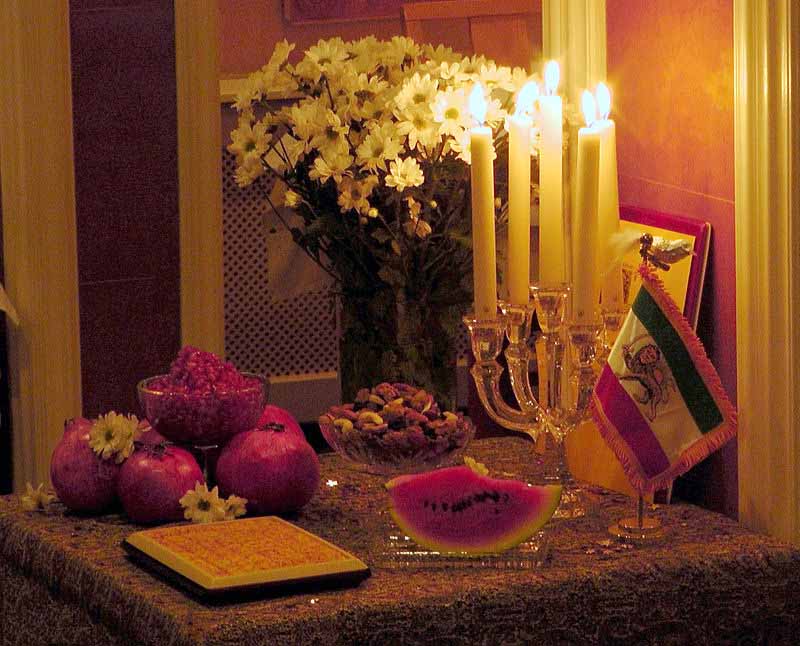
In Iran, there is the observance of Yalda, in which families kept vigil through the night and fires burned brightly to help the sun (and Goodness) battle darkness (thought evil). Yado is an Iranian festival celebrated on the "longest and darkest night of the year," that is, in the night of the Northern Hemisphere's winter solstice. The longest and darkest night of the year is a time when friends and family gather together to eat, drink and read poetry (especially Hafez) until well after midnight. Fruits and nuts are eaten and pomegranates and watermelons are particularly significant. The red color in these fruits symbolizes the crimson hues of dawn and glow of life. The poems of Divan-e-Hafez, which can be found in the bookcases of most Iranians families, are intermingled with peoples' life and are read or recited during various occasions like this festival and at Nowruz.
'Sacaea' was the Persian version. The annual renewal festival of the Babylonians was adopted by the Persians. One of the themes of these festivals was the temporary subversion of order. Masters and slaves exchanged places. A mock king was crowned. Masquerades spilled into the streets. As the old year died, rules of ordinary living were relaxed.

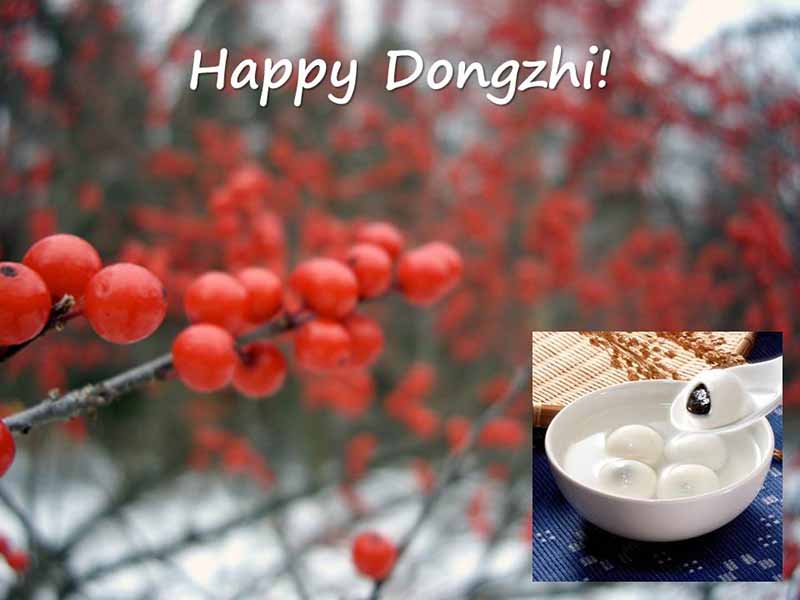
Winter solstice celebrations are also part of the cultural heritage of Pakistan and Tibet. In China, even though the calendar is based on the moon, the day of winter solstice is called Dongzhi, "The Arrival of Winter." The cold of winter made an excellent excuse for a feast, so that's how the Chinese observed it, with Ju Dong, "doing the winter." In the Chinese calendar, the winter solstice is called "winter's extreme" and is traditionally regarded as one of the year's most important Jieqis, comparable to Chinese New Year.
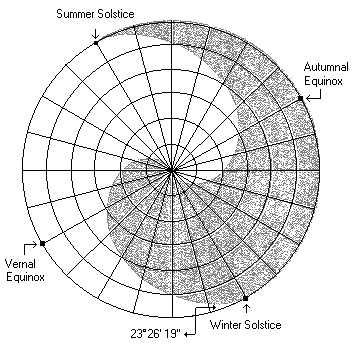
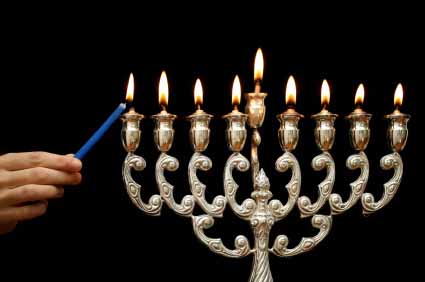
The placement of Chanukah is tied to both the lunar and solar calendars. It begins on the 25th of Kislev, three days before the new moon closest to the Winter Solstice. It commemorates an historic event -- the Maccabees' victory over the Greeks and the rededication of the temple at Jerusalem. But the form of this celebration, a Festival of Lights (with candles at the heart of the ritual), makes Hanukkah wonderfully compatible with other celebrations at this time of year. As a symbolic celebration of growing light and as a commemoration of spiritual rebirth, it also seems closely related to other observances.
The solstice may have been a special moment of the annual cycle for some cultures even during neolithic times. Astronomical events were often used to guide activities such as the mating of animals, the sowing of crops and the monitoring of winter reserves of food. Many cultural mythologies and traditions are derived from this. This is attested by physical remains in the layouts of late Neolithic and Bronze Age archaeological sites, such as Stonehenge in England and Newgrange in Ireland.
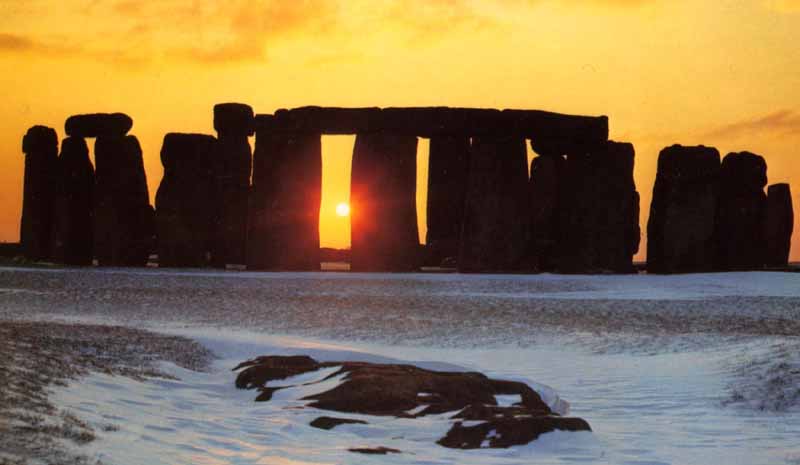
Shedding Light on Newgrange: 5,000-Year-Old Sun Trap May Not Be All That it Seems
Ancient Origins - December 21, 2016
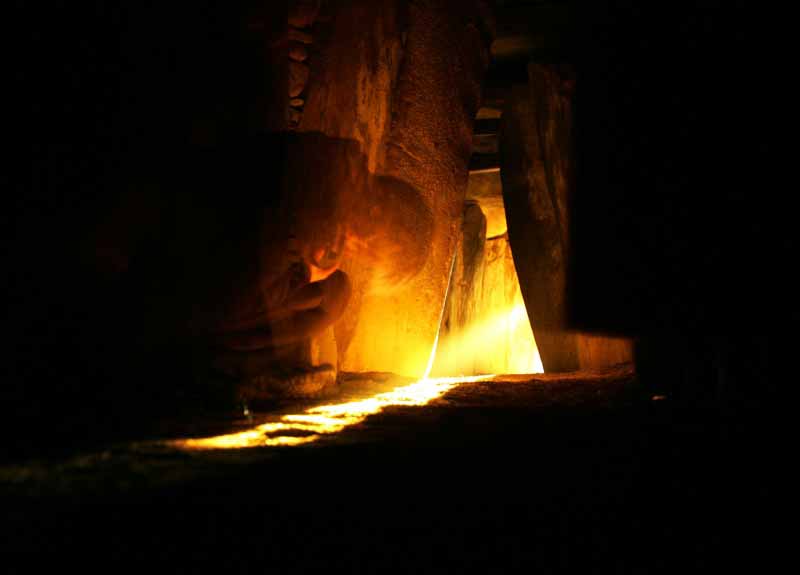
Today, the Irish and visitors celebrated the Winter Solstice as they did thousands of years ago at Newgrange, a huge Stone Age megalithic monument into the deepest part of whose main chamber the sun shines at sunrise. This year about 30,000 people participated in a lottery, from whom 50 were chosen, to be in the 5,000-year-old monument at sunrise to witness the primeval event the mornings of Dec. 18 to 23. While the monument near the Boyne River in County Meath is open all year and is one of Ireland's most popular attractions, it draws special international attention today.
Newgrange predates the great pyramids at Giza in Egypt by some 500 years and Stonehenge by about 1,000 years. When it was built, sunrise on the shortest day of the year, what we now call December 21, entered the main chamber precisely at sunrise. Experts say it is not by chance that the sun shines there. Now it enters about four minutes after sunrise because of changes in the Earth's orbiting of the sun since then.
The passage and chamber of Newgrange are illuminated by the winter solstice sunrise. A shaft of sunlight shines through the roof box over the entrance and penetrates the passage to light up the chamber. The dramatic event lasts for 17 minutes at dawn from the 19th to the 23rd of December. The light illuminates a stone basin below intricate carvings -- spirals, eye shapes, solar discs. Although not much is known about how Newgrange was used by its builders, marking the solstice was obviously of tremendous spiritual importance to them.
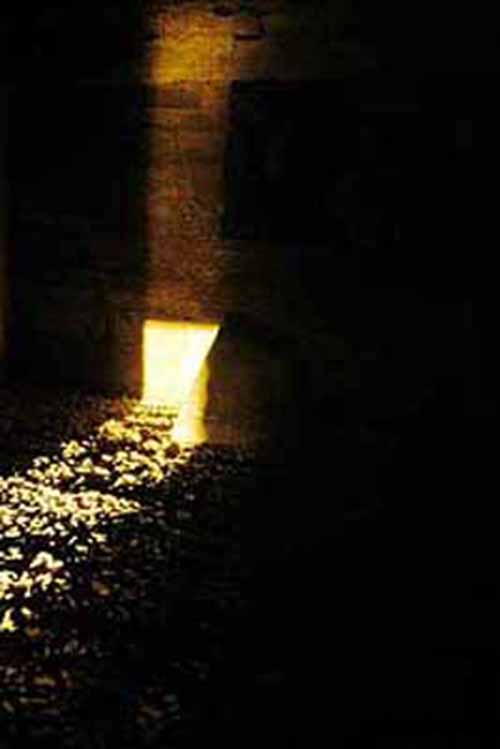
Maeshowe, on the Orkney Islands north of Scotland, shares a similar trait, admitting the winter solstice setting sun. It is hailed as one of the greatest architectural achievements of the prehistoric peoples of Scotland. Hundreds of other megalithic structures throughout Europe are oriented to the solstices and the equinoxes. The blossoming field of archaeoastronomy studies such sacred sites in the Americas, Asia, Indonesia, and the Middle East. The primary axes of both of these monuments seem to have been carefully aligned on a sight-line pointing to the winter solstice sunrise (Newgrange) and the winter solstice sunset (Stonehenge). It is significant that at Stonehenge the Great Trilithon was erected outwards from the centre of the monument, i.e. its smooth flat face was turned towards the midwinter Sun.
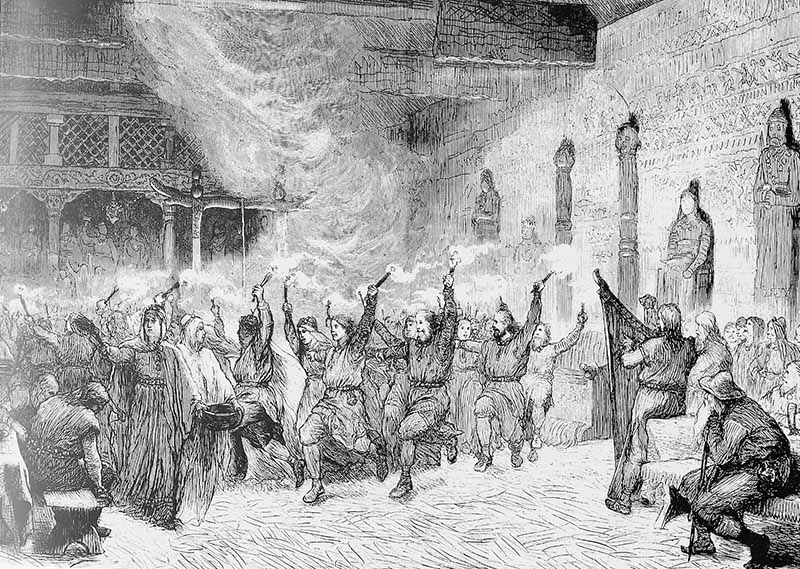
The pagan Scandinavian and Germanic people of northern Europe celebrated a twelve-day "midwinter" (winter solstice) holiday called Yule. Many modern Christmas traditions, such as the Christmas tree, the Christmas wreath, the Yule log, and others, are direct descendants of Yule customs. Scandinavians still call Yule "Jul". In English, the word "Yule" is often used in combination with the season "yuletide" a usage first recorded in 900.
Yule is the time of greatest darkness and the longest night of the year. The Winter Solstice had been associated with the birth of a "Divine King" long before the rise of Christianity. Since the Sun is considered to represent the Male Divinity in many Pagan Traditions, this time is celebrated as the "return of the Sun God" where He is reborn of the Goddess.
It is believed that the celebration of this day was a worship of these peculiar days, interpreted as the reawakening of nature. The Yule (Jul) particular god was Jolner, which is one of Odin's many names. The concept of Yule occurs in a tribute poem to Harold Harfager from about AD 900, where someone said "drinking Jul".
Julblot is the most solemn sacrifice feast. At the "julblotet", sacrifices were given to the gods to earn blessing on the forthcoming germinating crops. Julblotet was eventually integrated into the Christian Christmas. As a remainder from this Viking era, the Midsummer is still important in Scandinavia, and hence vividly celebrated. Sol Invictus ("The Unconquered Sun") was originally a Syrian god who was later adopted as the chief god of the Roman Empire under Emperor Aurelian. His holiday is traditionally celebrated on December 25, as are several gods associated with the winter solstice in many pagan traditions.The Christmas carol In The Bleak Midwinter refers to the Winter solstice in its title.
Although the instant of the solstice can be calculated, direct observation of the solstice by amateurs is impossible because the sun moves too slowly or appears to stand still (the meaning of "solstice"). However, by use of astronomical data tracking, the precise timing of its occurrence is now public knowledge. One cannot directly detect the precise instant of the solstice (by definition, one cannot observe that an object has stopped moving until one later observes that it has not moved further from the preceding spot, or that it has moved in the opposite direction).
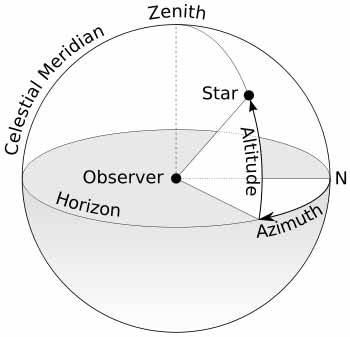
Further, to be precise to a single day, one must be able to observe a change in Azimuth or elevation less than or equal to about 1/60 of the angular diameter of the sun. Observing that it occurred within a two-day period is easier, requiring an observation precision of only about 1/16 of the angular diameter of the sun. Thus, many observations are of the day of the solstice rather than the instant. This is often done by observing the sunrise and sunset or using an astronomically aligned instrument that allows a ray of light to be cast on a certain point around that time. Before the scientific revolution, many forms of observances, astronomical, symbolic or ritualistic, had evolved according to the beliefs of various cultures, many of which are still practiced today.
In Scandinavia, some families place all their shoes together, as this will cause them to live in harmony throughout the year. And in many, many cultures, it's considered bad luck for a fire or a candle to go out on Christmas Day.
In Russia, there's a Christmas divination that involves candles. A girl would sit in a darkened room, with two lighted candles and two mirrors, pointed so that one reflects the candlelight into the other. The viewer would seek the seventh reflection, then look until her future would be seen.
In Spain, there's an old custom that is a holdover from Roman days. The urn of fate is a large bowl containing slips of paper on which are written all the names of those at a family gathering. The slips of paper are drawn out two at a time. Those whose names are so joined are to be devoted friends for the year. Apparently, there's often a little finagling to help matchmaking along, as well.
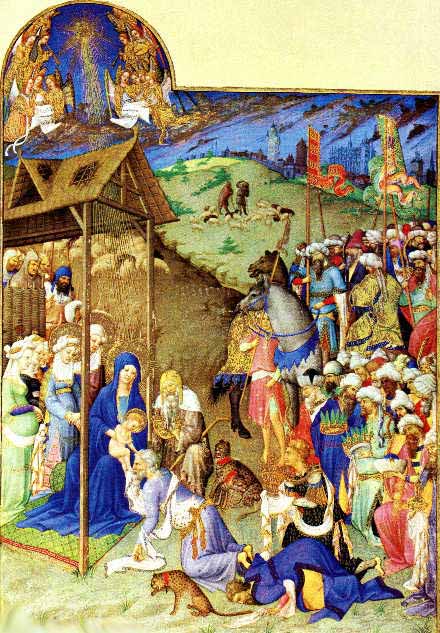
In North America, one of the most famous such sites is the Sun Dagger of Chaco Canyon,
New Mexico, built a thousand years ago by the Chacoans, ancestors of the Pueblo people.
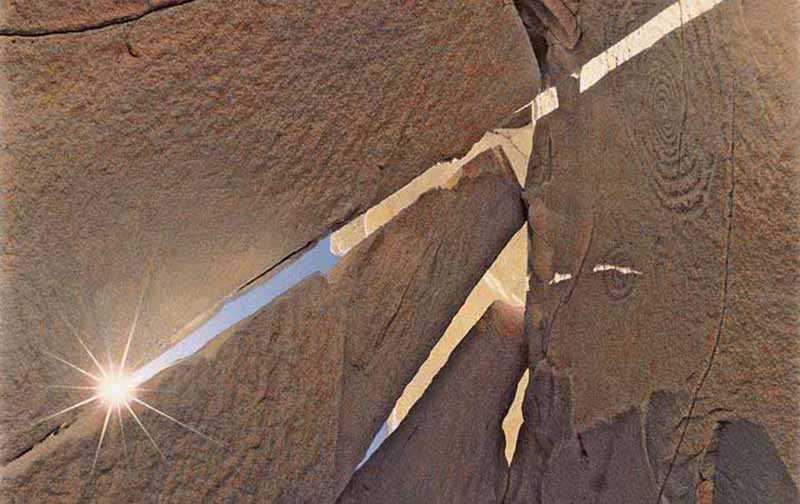
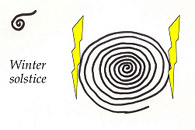

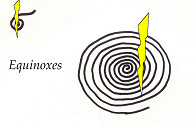
Native Americans have winter solstice rites. The sun images at right are from rock paintings of the Chumash, who occupied coastal California for thousands of years before the Europeans arrived. Solstices were tremendously important to them, and the winter solstice celebration lasted several days.
